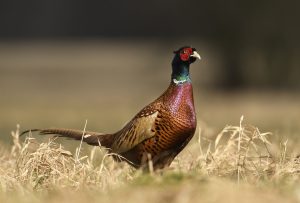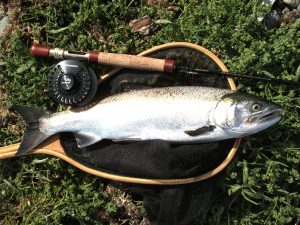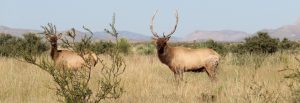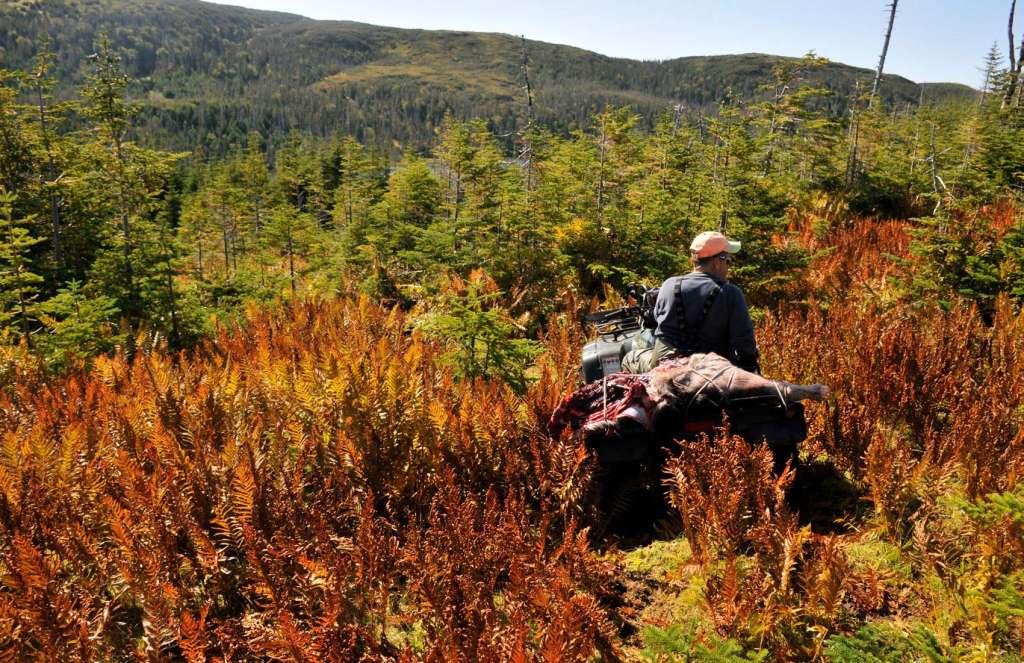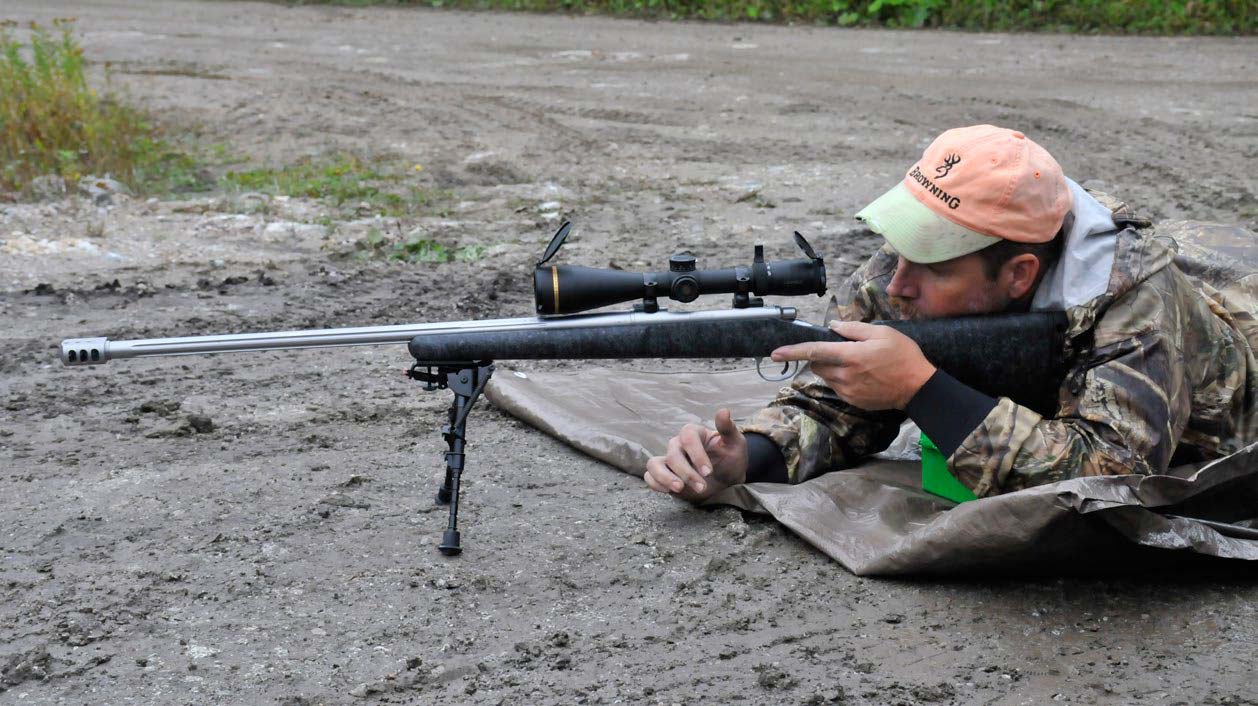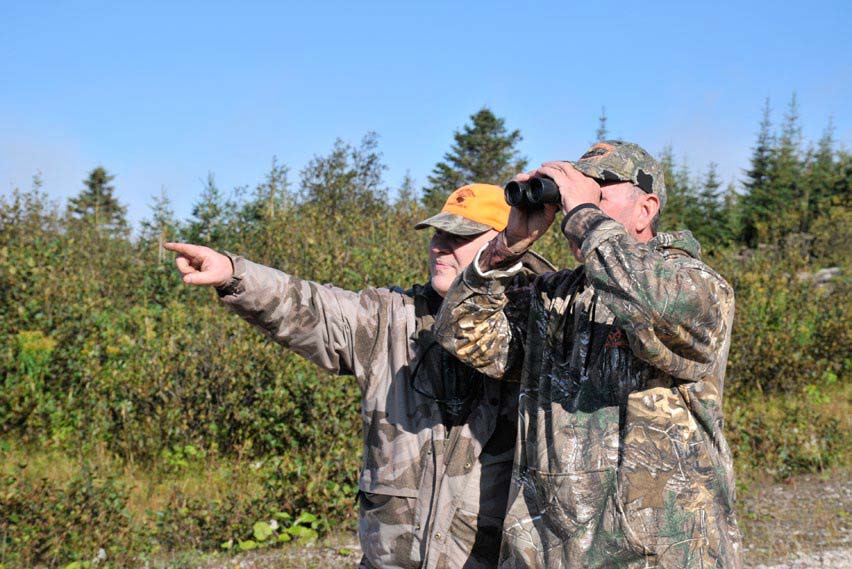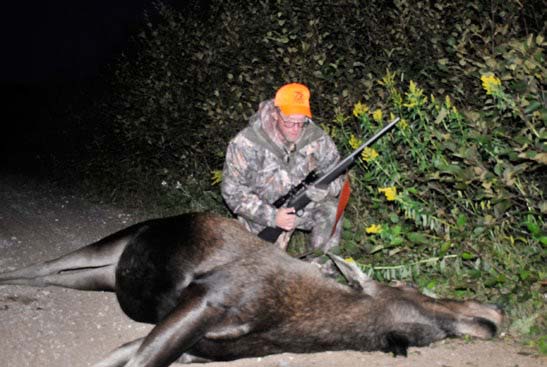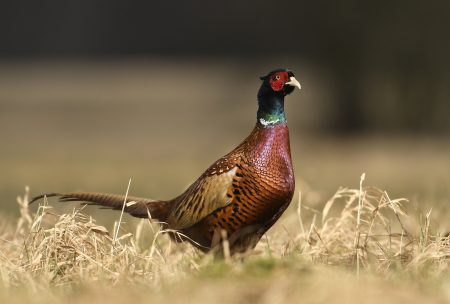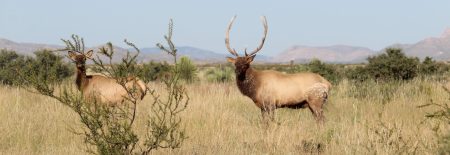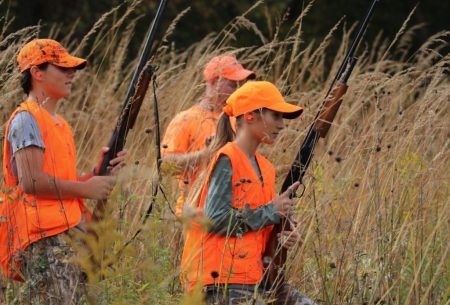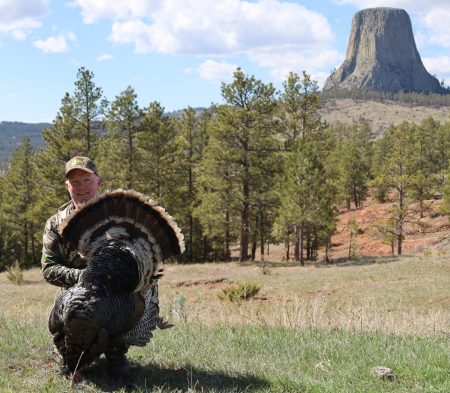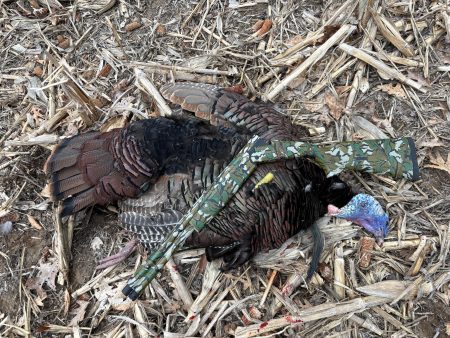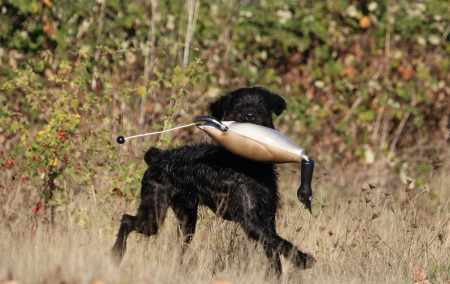“There’s coming out tonight boys,” predicted Newfoundland Where Ya Wannabe Outfitters moose hunting guide Barry Sweetland.
Little did he know how true his prediction would be, with all three of the hunters in camp tagging out before the end of legal shooting time that night. For the uninitiated, Newfoundland is moose central, with high hunting success rates. Moose aren’t native to the island province, but were introduced nearly a century ago.
Being in Deer Lake or Gander during September or October, is akin to one big hunt camp. Camouflage is the common dress and hunters crowd the airports, motels and restaurants. Mixed in with the tourist hunters are locals who depend on moose as a staple in their diet.
Sweetland’s prediction came on day three of our moose hunt with Where Ya Wannabe. Our camp included myself, Georgia hunter Bryan Steele and Florida’s Dennis Knox. Knox’s wife Jessica was along as an observer.
Where Ya Wannabe Outfitters is based on Pinchgut Lake, about 15 minutes out of Corner Brook on the west end of Newfoundland.
The night before the hunt I met my guide Bernie Staples, a life-long hunter and native of the area, has been guiding in the area 20 years, all of it with Where Ya Wannabe. Sweetland and his wife Janice started Where Ya Wannabe 20 years ago. He would be guiding the others.
Besides the territory south of Deer Lake and Corner Brook, their territory also includes Glover Island, the 18th largest island lake in the world. Sweetland ran helicopter hunts there originally but switched to hunting the mainland.
In 2017, Sweetland sold the business to Terry Smith, Tony Smith, and Dave Butt. They revived the Glover Island hunts, added spring, and fall bear hunts and built a new building with two bedrooms adjacent to the main building they use as their lodge. Salmon and trout fishing are offered during the summer months. The accommodations and food are both first rate.
Staples and Sweetland know the territory like the back of their hands, referring to the locations with their own names like the Pulpit, Stag, Redneck Road and Root Ball. This terrain is great for spotting moose – mountains overlooking bog and patches of forest.
Staples and I started Monday morning by seeing saw a cow and calf on a distant mountain. Cruising to different sites in his Honda side-by-side, we found ourselves moving up in altitude.
“This early in the season isn’t as much about calling them but spotting them and then making a plan to get on top of them to stalk within range,” Staples said.
He gave me some advice in case we encountered a moose in our travels. “If we see one on road no sudden moves, move slow and deliberate. If you move fast, they will break,” he said.
Then about two hours in, Staples spotted three moose in the bog on a distant mountain. There were two bulls, with racks massive enough we could make out the yellowish glow from their headgear over a mile away, and a cow. Staples quickly came up with a plan how we would approach the moose.
We drove closer, and then grabbed my Tikka .30-06, shooting stick, backpack and set off. We fought our way up hill through the tight trees, intermixed with bog. It wasn’t merely weaving between the trees, toppled trees and roots, but also, we were walking on moss and dodging wet spots. Arriving at the edge of the bog, Staples said the tuckamore – a low-growing tree – next to the bog was too tough to walk through and we would stay to the edge of the bog to break our outline. For every step forward across the bog, I sank down anywhere from a couple of inches to eight to 10 inches.
“It’s like walking on a sponge,” Staples said. “And this is a dry year, we didn’t have much rain. That’s why it’s as dry as it is.”
We skirt the first bog and are headed to the next when Newfoundland’s famous fog starts to roll in. He suggests we wait a bit to see if it was going to stay “flat”. When it doesn’t move off, we start moving forward.
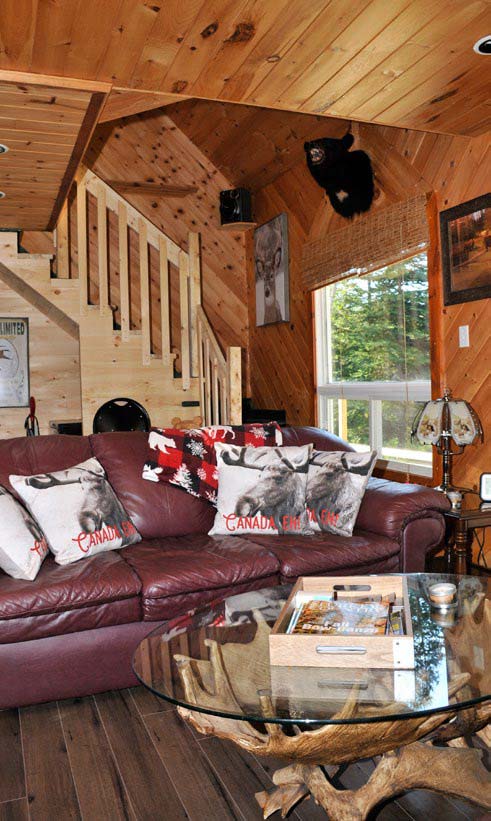
When the moose did not come in, Staples said we could either cut across the bog or cut through the trees. We decided on a combination of both and saw even more sign. It was clear the moose were here.
We spent the rest of the day glassing the hills and saw three more distant moose, making a total of eight for the day. Recounting our day over a home-cooked meal, I found the other group had seen 12.
The second day started by spotting a cow and calf in the distance. Moving on to another location, Staples glasses it, initially sees nothing and climbs a little higher for a better view. I move down the road to cover a part he could not see. We compared notes and he saw a cow and calf about 300 yards out while I didn’t see anything.
Our morning routine of looking for moose was interrupted by a radio call from Sweetland that he saw two eight-point bulls in a bog and directed us where we could get in front of their direction of travel. Heading for a stalk into the bog, we see a tree shredded at the top of the trail. Moose sign was even more abundant than where we did the stalk the day before. We head into the bog and find several beds, but no moose. Seeing a woodland caribou crossing on the hillside in front of us when we came out made the stock worthwhile.
A couple of stops later we spot a moose on the side of the hill at about 700 yards. Magnification reveals it was a small bull. Seeing more movement, we spot a cow and calf with it. We watched these for several minutes, but the bull eventually headed off with the cow. Staples said we would not be able to call it away and we moved on.
Getting together with the other group at lunch, we found our moose count was higher that day, but they had a few that were closer.
Before the hunt started, Sweetland asked us our intentions as far as the moose we wanted to harvest. Knox and I, who had bull-cow tags, both said we were going to hold out for a bull on Monday and Tuesday but then were more open to taking a cow on Wednesday. Steele only had a bull tag so his choice was obvious. The moose they had seen closer were not early-week shooters.
After we gathered for lunch, Staples and I were stopped glassing a spot a couple of minutes up the road when I saw a cow and calf run out of the forest and across the bog about 1,000 yards away.
The wind came up and Staples wanted to hunt a different area out of the wind. This was the afternoon of breathtaking vistas, despite the light rainfall. One lookout, a couple of minute hike back in, featured a lake with a waterfall draining it into a lake below. A well-worn path on the lookout signified caribou frequented the area. We went down a different trail with the quad overlooking Grand Lake and I had my first view of Glover Island. I told Staples the view equalled that of famed Western Brook Pond in nearby Gros Morne National Park.
We stopped at an area with a good view of a hillside interspersed with forest and a bog above. This was the perfect spot to see moose. There were possibilities of 300-yard shots, and also spot and stock to any moose on the far hillside. We did not see any and hit the trail. We were headed out that night when Staples stopped the ATV, calling out “moose”. He had spotted a calf cross the road. I jumped out in case there was a bull there, but only a cow and calf followed.
Talking over supper, I found Staples and I had seen more moose that day, but the other group had shooting possibilities. Steele was ready to drop a nice bull at about 400 yards but Sweetland held him off, unsure if he could get to it for the recovery.
Wednesday morning we returned to the hillside to try to catch the moose moving from the night before, but we saw nothing. When I heard a coyote howl, Staples suggested we move on as it might have chased the moose out of the area.
The morning was slow on the moose count – likely because the wind was still up. When we met the other half at lunch, talk was the wind was going down that night, leading to Sweetland’s prediction.
Shortly after the moose prediction, Knox – who was glassing the hillside from the truck – called out, saying he spotted three moose on a hill over a mile away. When they slowly headed towards an opening near the road, Sweetland put together a plan. He was going to stop in a dip in the road before the moose, transfer Knox – who is a paraplegic – to his wheelchair and push him up the hill for the shot.
Staples and I watched the action unfold through our binoculars. We saw the truck stop and then a few minutes later heard three shots. I saw another cow in the bog above where they shot. We drove up to them and saw Knox harvested a nice cow.
After congratulating him, we drove up the road and searched in the high meadows above for the second cow, or any other moose. This was to no avail.
After spending an afternoon looking for moose, we were hoping for a replay of the night before – finding a moose on the road on the way out, but a cow without a calf or a bull.
“Moose,” Staples said. “On the side of the road, do you see it?”
In a cutover next to the road, there was a cow standing in the open. I quietly got out of the side-by-side and quickly loaded the gun, pulled the Tikka up and put the crosshairs between below the hump. Squeezing the trigger, the moose dropped.
“Go up to it,” Staples urged.
I reloaded and walked forward. In the short time it took me to get there, the moose had expired. Staples cleaned the moose, and quartered it while I held it. We then put the meet in cheesecloth and loaded it into the side-by-side.
It was after 10 p.m. by the time we arrived back at his truck and trailer.
We were met by Sweetland, who was worried why we were so late. Hearing our story, I could tell he was excited and chomping at the bit with his own story.
He was at Bernie’s Outlook and saw a dominant bull in the tuckamore on what is known as “No Hope Hill” because there is no way to get a moose out of there.
Sweetland and Steele discussed it and decided to try to call it down with just over an hour of hunting time left Sweetland said the bull had a cow and its posturing led him to believe it may be in pre-rut.
“Time wasn’t on our side and we had no choice but to go in,” he said.
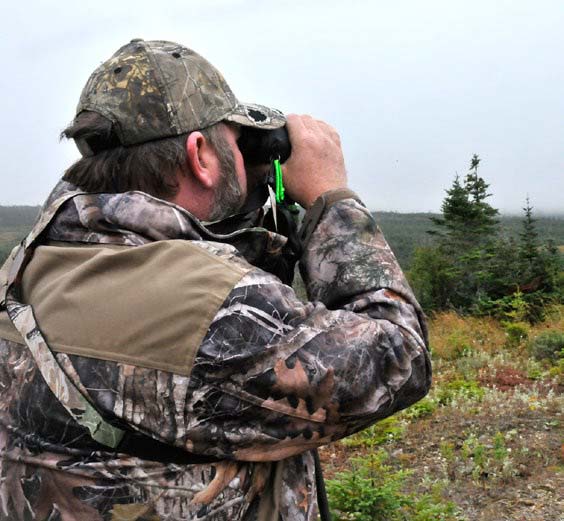
Sweetland continued to thrash the trees with his scapula.
“Every time I scraped, he scraped. For the first time he vocalized with a challenge call. With nothing to lose because we only have 19 minutes of light, I turn 180 and let out three challenge calls. Within seconds, I saw antlers above the tuckamore and it was moving towards us. It was committed. With 30 seconds, it moved through tuckamore and gave us a broadside view to show its dominance. It was still moving and I gave one quick grunt which stopped him in tracks and Bryan closed the deal.”
I was happy with the cow I shot, knowing it would provide excellent eating and I could switch to bear hunting. Talking to Smith later, he said the rut was in full swing the next week and they tagged 100 per cent on bulls. That trend continued throughout the season with all hunters taking called-in bulls, including archery hunters, with the exception of one who missed.
In Search Of A Newfoundland Bear
The next morning we all slept in and then went up to recover Steele’s moose. It took until lunch to get it out. My plan was to switch to my Savage 110 Storm in 6.5mm Creedmoor and hunt bear that evening. I had the gun with me and they dropped me off on the way out.
It was a quiet evening on the bear stand, despite the trail camera photos we checked that night showing several bears hitting the bait later in the day, and at least one two-year-old coming within legal shooting time.
With no rush, the next morning, cook Edith Combdon prepared a breakfast of toutons. Essentially fried dough similar to bannock or beaver tails, these were a pleasant continuation of the great food we had all week. Jigg’s dinner, which is typical Sunday night Newfoundland dinner, started the week. It is turkey, salted beef, carrots, turnips, cabbage and peas pudding. Other offerings through the week included spaghetti, roast beef and steak. Combdon and husband Alonzo, who manages the camp, have been working for Smith and Butt for five years. They started at the former camp they owned in the “back country”.
Heading in the next day, Sweetland reassured me I would get a bear that evening. I was in the stand for a couple of hours, and had just noticed I had about an hour of shooting time left when I saw a bear, which I figured was the two-year-old on the trail camera, tentatively enter the clearing near the bait. It came forward, backed out and then cautiously advanced towards the barrel. When it was faced away and standing with its front paws on the barrel, I slowly and quietly raised my gun. The bear scampered off before I could shoot.
With H. S. Strut cover scent wafers and spraying my clothes down before the hunt started, I didn’t think it was the scent that gave me away and was a little at a loss to what spooked the bear. My Redhead Silent Stalker Elite parka was true to its name and didn’t make any noise. I figured it must have been the movement and I concluded I was going to have to have the gun most of the way up if I was going to have any success.
I held it three-quarters up and waited.
About 20 minutes passed before there was any action and the bear quietly came back in again. It walked around the bait and started to head out. Figuring it was now or never, I lined up for a quartering shot to hit the vitals and go through to hit the opposing front shoulder to anchor it.
I fired and was sure I had connected, but the bear disappeared and I heard nothing.
Not more than a minute later, I saw movement and a larger bear came in. My tag was good for two bears, and I could take both in the same day. I knew it had to have its head behind the barrel or in it so I could get the gun up. But it also walked around the baited area and then left – despite the fact I hadn’t moved.
Steele accompanied Sweetland when he came back up. We had waited about a half-hour before looking for blood. Steele found the bear about 30 yards from the bait.
“You’ve got yourself a b’ar,” he said.
It was a perfect ending to a great week, seeing north of 50 moose for our combined total, incredible hunting, breathtaking scenery, great food and interesting people.
NEED TO KNOW
- Hunters should ensure they take high waterproof boots such as Lacrosse or Muck boots
- Waterproof clothing is also a must. A fourway coat such as the Redhead Silent Stalker Elite filled the bill.
- Flying in to Deer Lake is an option for hunters who don’t want to drive. Meat can then be shipped to several spots in the United States or to Mississauga in Ontario.
- Lodge is wheel chair accessible.
- Lodge is two hour drive from the Newfoundland ferry.
- Where Ya Wannabe can be contacted via the web site at moosehuntingcanada.ca
By Jeff Helsdon
Per our affiliate disclosure, we may earn revenue from the products available on this page.

